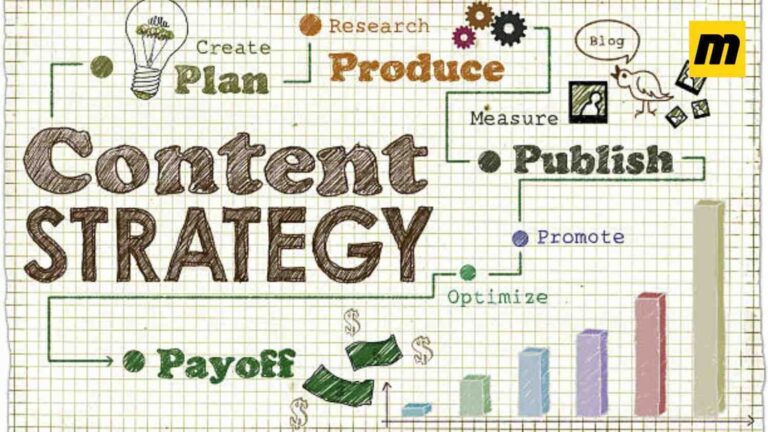A website’s maintenance cost depends on its type, size, and multiple factors such as its design, features, functionality, and every website element like texts, images, videos, plugins, animations, etc.
Apart from these, there are various essential aspects of a website, including the cost of a registered domain, SSL certificate, hosting service, technical support, and more.
Plus, maintaining a website also means there’s an added cost of optimizations like consistently enhancing the content and design to improve both user experience and online search visibility, which directly relates to SEO.
To get a clear idea of how much website maintenance can typically cost you, it is vital for you to understand essential cost breakdowns based on multiple website elements, factors, and optimization requirements.
In this article, you will learn what is website maintenance and why is it necessary. Plus, you will discover the 10 essential website maintenance cost breakdowns, and precise explanations to help you determine the overall monthly cost depending on the types of websites along with a discussion on how often website maintenance is required.
By the time you’re done reading this article, you should be able to figure out how much budget you should allocate for website maintenance.
What is Website Maintenance?
Website maintenance is the process of identifying, fixing, developing, and consistently optimizing a website to improve its user experience. Such enhancements can typically include optimizing your website’s design, content, and various technical elements to make it more intuitive and user-friendly.
Apart from the optimizations and enhancements, website maintenance is essentially required to keep your website up and running by ensuring that there aren’t any broken links or technical faults that hinder your website’s online presence and overall browsing experience.
Why is Website Maintenance Necessary?
Here are some of the major reasons that make website maintenance a mandatory requirement for the long-term sustainability and growth of your business and its online presence.
1. Intuitive & Smooth User Experience
If you think about the customer journey, the moment a potential customer lands on your website they tend to evaluate it based on its design, and most importantly the user experience.
Now, if your website doesn’t feel worthwhile then there’s a high chance that they will immediately leave your website, and most possibly switch to your competitor’s website.
Apparently 76% of customers dissatisfied with the user experience of a website switch to a competitor’s website.
According to recent statistics, 42% of customers agreed to leave a website within 10 to 20 seconds of visiting the website due to poor functionality.
60% of eCommerce customers have reported abandoning a website and 88% of customers are less likely to return to a website due to a poor experience.
The only way to ensure a smooth user experience is to conduct effective website maintenance by optimizing and improving the website’s content, design, and other elements to improve the user experience.
Managing an intuitive and smooth website user experience is a mandatory requirement, 75% of people typically judge a website’s credibility depending on their impression and experience of using the website.
2. Maintaining Optimal Speed & Performance
Nobody likes a website that’s slow and sluggish, these days it’s necessary for websites to load within the blink of an eye.
The ideal website loading time ranges between 1 to 3 seconds, and the optimal website loading time should be 1 second or less.
But if it takes your website 4 seconds or more to load then that’s alarming. Delay in website loading time leads to annoyance, which ultimately drives people to leave your website.
As a matter of fact, 47% of customers expect websites to load within 1-2 seconds. According to Google Consumer Insights, 53% of mobile users are likely to abandon a website that takes more than 3 seconds to load.
If you refer to the search engine guidelines of both Google and Bing, you’ll find that it’s a core ranking factor. So, unless your website loads at the optimal or ideal speed, there’s a high chance that it won’t rank on the top search results, which makes website speed a crucial ranking factor for SEO.
Your website loading speed directly associates with its user experience, so if you want to provide your target audience with a smooth and satisfactory browsing experience then you need to focus on ensuring optimal website loading speed, or at least the ideal loading speed.
Routine website maintenance to improve the load time of your website includes the optimization of images, proper formatting, removal of unnecessary files and plugins, and effective management of website data, along with many other technical adjustments.
Regardless of the type of website, you have whether it’s a personal blog or an online store you will be uploading content and updating your website from time to time, which will include new files, images, videos, and other graphical elements.
All these need to be properly optimized consistently to ensure a fast-loading website. Hence, it is vital for you to regularly maintain and optimize your website to ensure the fastest possible loading speed.
3. Ensuring Website Security
People tend to avoid websites that have security and safety concerns. More importantly, it creates a very negative impression which can have a significant impact on your business’s reputation.
Would you visit a website that poses risk to your data and financial security? One of the reasons that there are many unsafe websites out there is, many businesses aren’t aware of the dire consequences of cyber threats.
There are various malicious plugins and website integrations that can inject malware, spyware, ransomware, and other dangerous e-threats into your website.
Your website can become the hacker’s center point to exploit your target audience and steal sensitive information and data like their bank account details, and credentials to their social media accounts, credit cards, and other payment gateways like Paypal, Payoneer, etc.
Even your own business’s bank account might be at high risk of being hacked. There are so many possibilities that can end up in a disaster for your business.
To prevent all that it is extremely necessary to take all the necessary steps to improve your website’s security and closely monitor it to prevent any form of cyber attack.
4. Minimizes the Scope of Website Downtime
Various technical website issues significantly affect the live status of your website. If you don’t properly maintain your website and address these technical issues, then your website can go down at any point.
The longer your website’s down, the more money you lose. Customers won’t be able to access your website, so they won’t be able to purchase your products and services.
Website downtime can also lead to a very negative impression on your business, especially if it’s frequent. Not only will you lose your existing customers, but it will also significantly reduce various opportunities for attracting and acquiring new customers.
If your website downtime’s frequent then it can severely hinder your business’s online presence due to reduced website traffic, and possible search engine penalties like your website being deranked, deindexed, and removed from the search engine database.
It’s important to know that your website won’t just go down for technical issues, it can also be triggered by malicious attacks by hackers.
This kind of cyber attack is popularly known as a DDOS attack which is an acronym for Distributed Denial-of-Service attack. It’s a deliberate attack on your website’s network system to disrupt your website and force it to go down.
The only way to prevent and overcome DDOS attacks is by applying to integrate a comprehensive website security system, along with consistent security tracking and monitoring.
Consistent website maintenance won’t guarantee to keep your website up and running forever but it will significantly reduce the possibility of your website going down.
If you can maintain your website effectively, then it’s possible to completely avoid website downtime. And, with a robust website maintenance system in action, it will be easier, more efficient, and much faster for you to overcome any downtime issue.
5. Boosts Website Traffic & Average Usage Time
If you want to attract more customers, increase your revenue, and grow your business then you need to boost your website traffic. Increased website traffic means more people are entering and browsing your website.
The most prominent source of website traffic is organic search results. According to Brightedge, 53% of all website traffic comes from organic search results.
So, your online presence widely depends on the effectiveness of your SEO strategies. But your SEO strategies won’t be effective if your website has technical issues that ultimately hamper its user experience.
That’s why it is very important to conduct effective website maintenance to ensure that your website is free of technical issues.
Once the search engine determines that your website does not have any technical issues, and fills in the required criteria it will index your website and determine its search rankings based on various factors which mainly associate with search relevance, helpfulness, and user experience.
It will closely examine your website’s engagement metrics, any increase in website traffic and average usage over a significant time period is a strong indication to search engines that your website is useful.
If you manage to keep the website traffic and average usage time on an upward trend, then your search rankings are likely to improve.
Hence, consistent website maintenance, optimization, and improvement are crucial, so you need to make that a top priority.
10 Essential Breakdown of Website Maintenance Costs
1. Domain Name
A domain name is the unique address of your business on the internet, that appears on the URL. Typically a domain name contains two core elements that include your business’s name and a web extension like .com, .net, org, biz, etc.

For example, our business’s name is MonsterClaw and we have acquired the web extension .com, so our registered domain name is monsterclaw.com
It is a fundamental step to get a domain name, without a domain name you can’t have a website. Initially, you’ve two options to get a domain name, either you can register for a free domain name or you can acquire a paid domain.
Many sites like Shopify, Wix, and WordPress have the option to register a free domain name, but that will leave you very limited options which are not viable for running a business.
Plus, having a free domain name means, you will have to keep their web extension as a part of your URL. For example, monsterclaw.myshopify.com, monsterclaw.wordpress.com, and monsterclaw.wix.com etc.
You can’t protect and claim copyright, trademarks, and intellectual infringement rights with a free domain name, as the web establishment isn’t yours technically. It belongs to the original domain name that your website’s registered under.
In the future, if anyone registers a paid domain under your business’s name, you won’t be able to do anything about it.
More importantly, with a free domain name, you won’t be able to do effective SEO. Search engines identify websites based on their URL tags, so if your URL contains the name of another organization, search engines like Google may not recognize your brand.
So, it would be difficult for existing and potential customers to find your website by directly searching for its brand name on Google, Bing, or any other conventional search engine.
It also puts a huge question mark on your business’s credibility and authority as most people don’t trust websites with free domain names.
Therefore, it’s ideal to register a paid domain name, with that you can seamlessly establish your business’s online presence, along with enhancing your brand awareness and credibility.
The annual average cost of acquiring and renewing a domain ranges between $10 to $20 mainly depending on the domain extension and registrar that you choose.
2. SSL Certificate
Integrating an SSL (Secure Sockets Layer) certificate is crucial for any business website to protect the safety and privacy of data being transferred between a business’s web server to the customer’s website browser.
SSL certificates encrypt the data transmission which makes it almost impossible for hackers and cybercriminals to intercept the data transmission and gain access to sensitive data and information, like email, credit card details, bank credentials, etc.
These days most modern web browsers have this padlock icon appearing for sites that have an SSL certificate, which signifies that the website is safe, secure, and encrypted.
Here’s an example of a site with an SSL certificate, there’s a visible padlock appearing on the top section right beside the link. Moreover, websites that have an SSL certificate will have a URL structure containing HTTPS, instead of just HTTP.
Websites that don’t have an SSL certificate will display a caution sign instead of the padlock, and when you click on it, a message will appear stating that the site’s connection is not secure.
According to an online survey, it was found that 84% of customers would not purchase from a site and would immediately abandon it for not having an SSL certificate.
Maintaining online safety is directly linked to your business’s reputation and credibility. Customers wouldn’t feel comfortable shopping on a website that appears unsafe.
Another concerning threat of not having an SSL certificate is that anyone can create a duplicate of your website and run operations to scam your customers.
Getting an SSL certificate will help you avoid potential security breaches, and will protect the credibility, reputation, and authority of your business’s website.
The average annual cost of getting an SSL certificate can range from $8 to $1000 or more per year on the website’s size, number of pages, and various other factors. On average SSL certificates cost $60 annually.
3. Web Hosting
Just like registering a domain name, getting a web hosting service is a mandatory requirement to have a live and functional website.
You have a hard drive on your computer that stores all the files, like documents, images, and videos right?
Web hosting is something similar, here you get a server to store all the files, apps, and plugins of your website in a server, which makes it accessible on the internet. And, that’s how you essentially have a functional website.
Now, there are different types of web hosting options, and each of them has its own set of costs, which include the following:
-
-
Shared Hosting
-
Several websites are hosted from a single server, and although it’s a feasible option for startups, it’s not ideal for businesses to target moderately high website traffic.
If you’re just starting your business it might be ideal to initially get a shared hosting service, but in the long run, it is better to upgrade.
The average annual cost of shared hosting can range anywhere from $5 to $20 per month, and $24 to $120 annually.
-
-
Website Builder
-
Alternatively, you can subscribe to website builders like WordPress, Wix, or Shopify to run a full-fledged website hosting service. The cost can significantly vary depending on the website builder that you choose.
Ideally, it would be beneficial for small to medium-sized businesses to consider opting for website builders.
Depending on the size of your business and its website, the average cost of hosting your website via a website builder can range from $60 to $180 annually.
-
-
Virtual Private Service (VPS)
-
Hosting your website on a VPS is pretty similar to getting shared hosting, but the main difference here is that VPS hosting offers a comprehensive range of customization options, whereas shared hosting is limited to a package deal.
So, with VPS you can run a relatively larger website, and add more functionalities to provide a better user experience. All these additional advantages make VPS comparatively more expensive compared to shared hosting.
On average VPS hosting will cost you ranging from $20 to $100 per month and $240 to $600 annually or more.
-
-
Dedicated Hosting
-
Out of all the hosting options, a dedicated hosting service is the most expensive one. But the additional cost adds extensive value which is highly necessary for the long-term growth and development of businesses, especially medium to large-scale businesses with large websites.
It adds additional value, safety, and stability with the average capacity to have more than 100,000 website visitors actively engaging on your website.
The average cost of getting a dedicated website hosting service can range from $1200 to $24000 annually or more.
4. Email Hosting
Most customers tend to trust emails from registered domains. According to an online survey, it was found that 75% of customers trust emails from professional business websites.
Whether it’s the B2B or B2C dynamics, whenever someone receives an email registered under a custom domain, it automatically enhances credibility as the recipient can recognize that the email has been sent from that particular organization.
Using an email registered under your company’s domain name adds more credibility and a higher sense of authenticity. Therefore, it is very important to use premium email services to improve your business reputation and showcase brute professionalism which always makes a good impression.
An example of custom and professional email hosting could be, user@monsterclaw.com
It will include the name of the sender, and the company’s domain name and website element.
To create professional emails for your domain, you can subscribe to Google Workspace, which will cost you $6 to $18 per month for each user.
Alternatively, you can use Zohomail or DreamHost which will cost you between $1 to $4 per month for each user.
On average you will have to invest $1 to $20 for each user monthly for using a custom domain email.
5. Website Design Optimization
It is vital to create, develop, maintain, and optimize your website’s design to improve its user experience, along with the overall satisfaction of using your website.
A lot of people assume that website design is limited to its appearance but the design also portrays its functionality and features. 75% of customers judge a website’s credibility depending on its design.
Also, it helps search engines understand your website’s structure and where each element of your website is located.
Your website’s design significantly influences its website traffic, conversions and it’s position on search rankings.
So, it is very essential to come up with a robust website design and regularly optimize it.
Website design costs will mainly depend on the website’s size and the number of pages it contains. The bigger the website, the higher the cost.
On average it will cost you an average of $2000 to $60,000 annually to optimize and maintain a website’s design if you hire professionals or agencies.
Alternatively, you can use website builders like WordPress to optimize your own website’s design, but if you’re not a web design expert then playing with templates might not be your best bet here.
You might miss out on important optimizations which can ultimately hinder your website’s conversion and SEO performance.
It will cost you $5 to $17 to acquire various themes on WordPress, along with any other tools that you use.
Everything depends on the size of your website here, if it’s a startup or a small business then it’s feasible to manage and optimize your website design, but if it’s a medium-large sized business then it’s best to hire an agency to optimize your website’s design.
6. Integration of Plugins
Plugins are extensions to enhance the functionality of your website without affecting its source code. If you want to include additional features to your website then it is important to install helpful plugins, as well as remove unnecessary plugins.
Whether you’re using website builders like WordPress or Shopify, you need to invest in plugins. Well, there are some free plugins, but not all plugins are free.
Whether you acquire plugins to include contact forms in your website or whether it’s to include a new feature like automated image compression or for improving your website’s security, all of them will require a significant amount of investment.
On average it is estimated that acquiring and integrating plugins can cost you an average of $40 to $500 annually. Of course, will entirely depend on the plugins that you choose to acquire and integrate.
7. SEO
If you don’t properly maintain your website then your SEO strategies won’t be effective either. The primary requirement of conducting effective SEO is to first ensure that your website is bug-free and does not contain any issue that goes against the search engine guidelines.
Especially issues that directly affect your website’s crawlability and user experience which includes issues with website structure, loading speed, mobile responsiveness, broken links, poor site structure, and many others.
To avoid all that, it is necessary to conduct SEO audits to identify potential issues and fix them accordingly. Plus, it is crucial to update and optimize your website every now and then to boost its search rankings.
Without properly maintaining and optimizing your website it is unlikely for your web pages to even get indexed by search engines, and if it does not get indexed then there’s no way your website will rank.
So, if you want to boost your website’s search rankings it is crucial for you to highly prioritize Technical SEO to effectively maintain and optimize your website.
The average cost of technical SEO can range from $1000 to $3000 per month or more depending on the requirements and the range of technical optimizations required.
8. Content Development & Optimization
Content is the ultimate driving force of all your digital marketing strategies, whether it’s SEO, or PPC Marketing, without the use of helpful and engaging content there is no way you can build and develop your online presence.
Content can make or break your business, it entirely depends on you whether you’re focusing on creating and optimizing quality content or are you simply neglecting the most important factor responsible for establishing, maintaining, and enhancing your online presence.
A key requirement of website maintenance is also to effectively develop and optimize your content, which includes identifying and correcting any mistakes along with tweaking and adding more valuable information to make your content more helpful and captivating to your target audience.
Content is the only way to communicate information across the web, whether it’s to inform or sell your products, you need to use content to entice your audience.
Search engines like Google and Bing identify your website based on its content, and it determines whether it’s helpful and worthy of appearing on the top search results mainly depending on the quality, relevance, and depth of information in your content.
So, you need to consistently create valuable fresh content, along with frequent optimization of your existing content.
Content development and optimization include a range of specializations like keyword research, topic research, keyword tracking, keyword optimization, proofreading, editorial, and a lot of brainstorming.
Hence, it is required to spend a significant amount of your budget on effective content development and optimization.
The average monthly cost of effective content marketing can range anywhere from $500 to $5000 or more depending on the overall requirements and services required.
9. eCommerce Optimization
eCommerce websites require consistent monitoring, tracking, maintenance, and optimization.
Starting from the moment that a visitor lands on your eCommerce website to the point of various conversions depends on how intuitive, smooth, and easy it is to browse through your website.
Most people visiting eCommerce websites have a buying intent, they are looking for particular products and services that you offer. You need to have your website well-optimized so that potential customers can find the information, product, or service that they are looking for.
Along with that it, it is also crucial to ensure that you have an effective inventory management and cart system on your website. In this way, it will help customers find the products that are available in stock, and seamlessly add products that they’re interested to purchase.
You should also integrate all sorts of payment gateways like Paypal, Payoneer, card payments, etc. to ensure smooth and fast transactions.
All of these eCommerce website optimizations require active website maintenance and development. It is a super essential investment to boost your business’s online presence, drive traffic to your website, and increase conversions and revenue.
The average monthly cost of eCommerce optimization can range from $700 to $5000 or more depending on the level of maintenance, development, and optimization required, along with the size of your website and the number of pages it contains.
10. Backup
Websites run on servers, and these are machines that can malfunction at any time which can lead to the loss of data on your website.
You can lose valuable data and information that includes sales records, customer profiles, online inventories, and all your web pages.
Imagine going through the hassle of recreating your website again from scratch. How painful, costly, and time-consuming would that be? Plus, it could even ruin your business’s online presence, and put you in a severe crisis.
It could potentially lead to the possibility of losing your business and ending up bankrupt.
It’s not just server issues that can lead to the loss of data on your website, cyber attacks can also damage your website leading to the theft and deletion of your valuable information and data.
Moreover, some countries have laws and regulations that mandate having essential business data and information, so losing your data could lead to legal consequences.
To prevent such mishaps, you must back up your website and all of its data. So, in certain events, you can seamlessly recover your data using the backup.
The average cost of cloud storage for backing up your data can range from $5 to $50 per month or more.
Alternatively, you buy business suites like Google Cloud to back up all your essential website data and business files with unlimited storage options.
Types of Websites & Monthly Maintenance Costs
The following table below illustrates the average monthly maintenance costs of a website maintenance per month, depending on the website’s size, type, and multiple external factors.
| Website Type | Maintenance Cost per Month |
| Personal Websites | $5 to $25/month |
| Professional Blogs | $25 to $75/month |
| Small to Medium Business Websites | $35 to $500/month |
| Multimedia Entertainment Websites | $300 to $2,500/month |
| Corporate Websites | $200 to $4,500/month |
| eCommerce Websites | $750 to $5,000/month |
Disclaimer: The maintenance cost in the chart above are average estimates, they can typically vary depending on your actual requirements for website maintenance.
How Often Is Website Maintenance Required?
To keep your website running smoothly you must maintain it as frequently as possible. Infact, it is necessary to maintain your website at least once every month.
Needless to say, it is vital to consistently monitor your website to ensure its stability, usability, safety, and optimal website uptime.
Although websites are meant to be automated, ensuring that they are accessible 24/7 requires consistent maintenance and optimization.
So, this is something that you must always prioritize if you wish to enhance your website’s search engine rankings, and website traffic, along with increased conversions and substantial growth in sales revenue.
If you want to enrich the possibilities of expanding your business to new heights then it is crucial to prioritize the opportunities of developing and optimizing your website.
Final Remarks
The average website maintenance cost can widely vary from $400 to $60,000 annually depending on the size, type, hosting, SSL certificate costs, website design, optimization, SEO, and many other third-party costs. Similarly, the monthly average maintenance cost can significantly range from $30 to $5000 or more.
On the contrary, if you decide to do your own website maintenance, then you’ll have to invest in various tools, and hosting services. This will give you the opportunity to save the cost of hiring skilled web developers and SEO experts.
However, maintaining and developing a website requires extensive technical knowledge, and if you don’t have that you might accidentally break your website, and hinder your business’s online presence, and it’s reputation.
Hence, it is better to invest in hiring specialized website developers and professional technical SEO specialists who can help you maintain your website, enhance your organic search visibility, increase conversions, and generate more revenue.
Now, it’s up to you to decide how you will allocate your budget and invest in developing and maintaining your website.
If you need help with professional website maintenance, optimization, and development, you can Book a Free IT Consultation! Once you sign up for our online consultation, one of our experts will connect with you soon.










